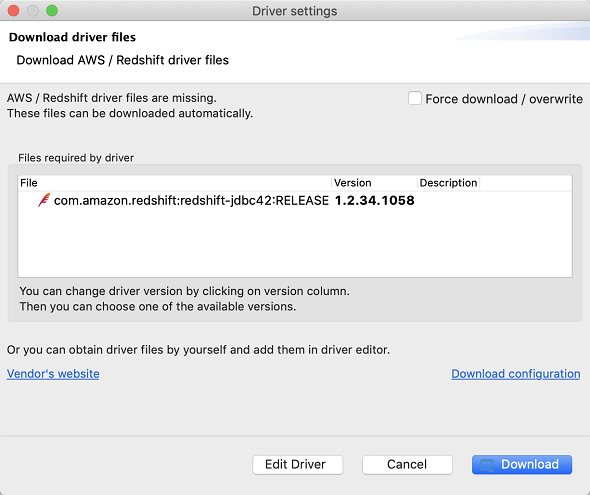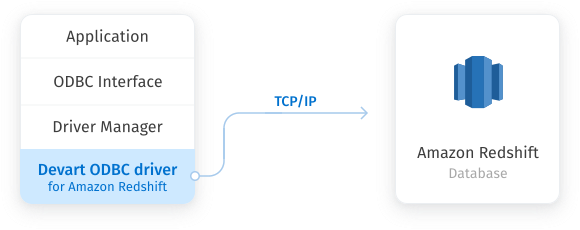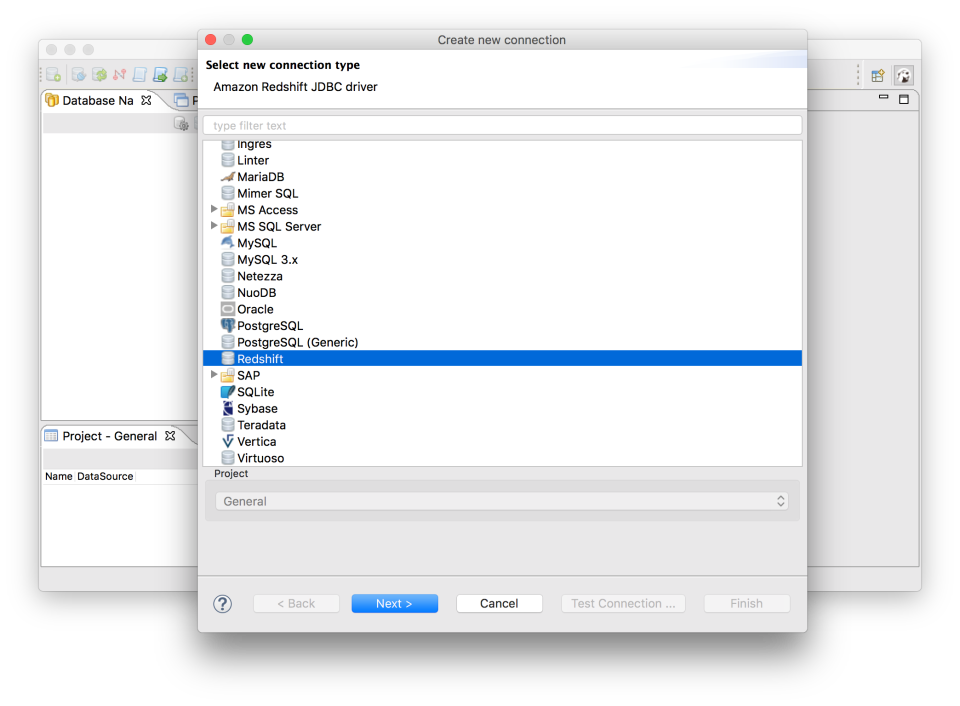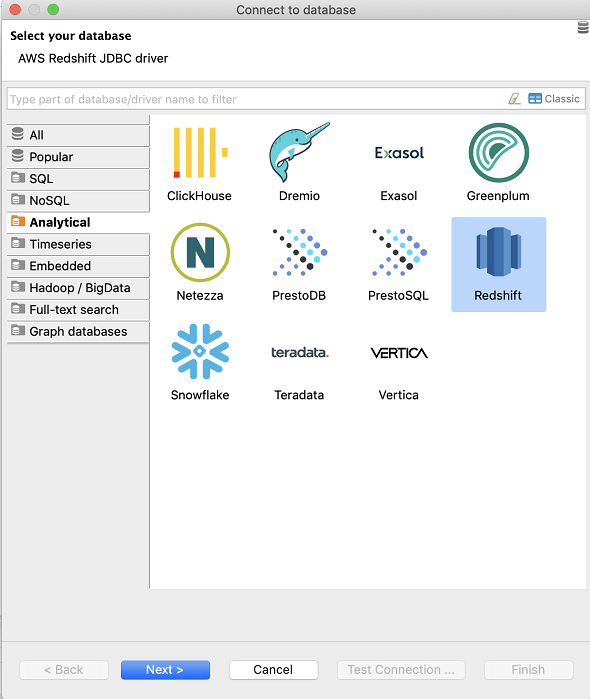

- #Which jdbc driver redshift for mac install#
- #Which jdbc driver redshift for mac manual#
- #Which jdbc driver redshift for mac download#
Learn more about setting up a JDBC DSN, executing SQL, loading data, and inserting data with in-depth examples in the Stata Data Management Reference Manual see jdbc. Now we have a Stata dataset and can perform our analysis! jdbc describe response_info Table: response_info

To see what tables are availiable to load from our connection, we type We can now add the above commands to profile.do to save these connection settings in between Stata sessions, and we now can connect to our Redshift database by typing jdbc add MyRed, jar("`jar'") driverclass("`driverc'") url("`url'") If these database settings need to be used by others or you just want to make remembering them easier, we can store them by typing jdbc connect, jar("`jar'") driverclass("`driverc'") url("`url'") local url "jdbc:redshift://.:5439/emails" Now in the Stata Do-file Editor, we store our connection information by typing We then place the downloaded JDBC JAR file along our Stata adopath.
#Which jdbc driver redshift for mac download#
We first log in to AWS and go to the Amazon Redshift configuration page to download the correct JDBC driver and get the correct connection information. We have email data stored on Amazon Web Services in a Redshift cluster, and we need to load these data into Stata.
#Which jdbc driver redshift for mac install#
Once you install a JDBC driver, that driver and your Stata code are all you need to switch from, say, your Mac laptop to your company's Windows cloud systems.What's great about jdbc is that it's a cross-platform solution, so our JDBC setup works the same way for Windows, Mac, and Unix systems. jdbc allows us to exchange data with some of the most popular database vendors such as Oracle, MySQL, Amazon Redshift, Snowflake, Microsoft SQL Server, and much more.


To see what tables are availiable to load from our connection, we type. We can now add the above commands to profile.do to save these connection settings in between Stata sessions, and we now can connect to our Redshift database by typing. As it is mentioned in Redshift documentation, the best way to insert big data in chunk in Redshift is using copy command in which you need to dump your data in file and upload it to a S3 bucket and then using copy command to insert to Redshift. If these database settings need to be used by others or you just want to make remembering them easier, we can store them by typing. In this post, I demonstrate about increasing insert in Redshift database using Java JDBC. Now in the Stata Do-file Editor, we store our connection information by typing. You can also insert all your variables into a database table or just insert a subset of your dataset. You can load an entire database table into Stata or use SQL SELECT to just load specific columns from a table into Stata. If your database vendor provides a JDBC driver, you can download and install that driver and then read from, write to, and execute SQL on your database via jdbc. What is great about jdbc is that it is a cross-platform solution, so our JDBC setup works the same way for Windows, Mac, and Unix systems. You can import data from some of the most popular database vendors, such as Oracle, MySQL, Amazon Redshift, Snowflake, Microsoft SQL Server, and many more. The new jdbc command supports the JDBC standard for exchanging data with relational databases or nonrelational database-management systems that have rectangular data. JDBC is a cross-platform standard for exchanging data between programs and databases. Redshift is exclusively CUDA based and nvidia recently stoped driver support for macs. Stata 17 adds support for JDBC (Java Database Connectivity). Notice the highlighted Graphics line, which tells you what GPU you have. Connecting Stata with databases has gotten even easier.


 0 kommentar(er)
0 kommentar(er)
